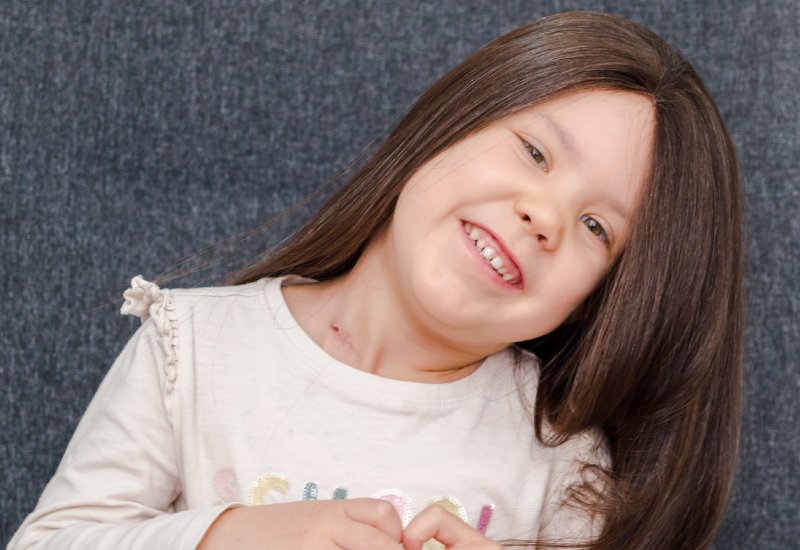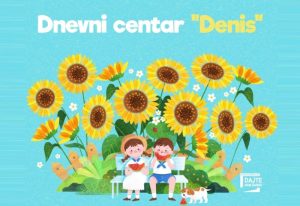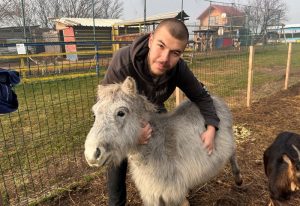In 2017, they officially launched the project “My hair, your hair”, the first step of which was education for wig makers, and then the launch of a wig workshop, where since then they have been making wigs from natural hair for children who have suffered temporary or permanent hair loss.
SARAJEVO – The association “Heart for children with cancer” was founded in April 2003. They provide accommodation, food and psychosocial support to children with cancer and their families, organize annual rehabilitation camps and help with the procurement of medicines, medical equipment and treatments abroad.
They regularly improve their services, add activities and expand the range of activities in order to more adequately respond to the challenges facing children with cancer and their families.
“Through the time and years that are behind us, circumstances and opportunities have changed, but we have remained faithful to the absolute priority that we defined at the beginning of our activity, which is the welfare of our users – children with cancer and their relatives,” she said. Association spokeswoman Atifa Buldić-Bešić.
The most active are the Association in the territory of Bosnia and Herzegovina, whose target group is primarily children suffering from and being treated for malignant diseases.
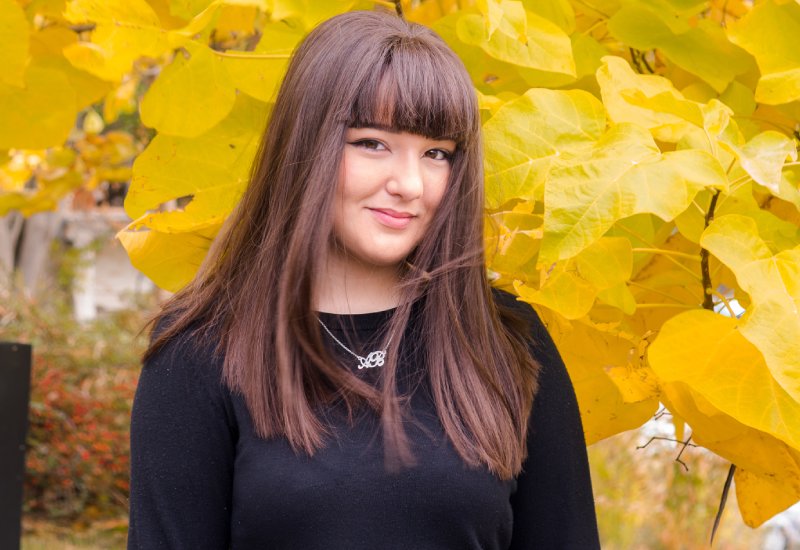
They lead many large projects and program activities, which are of great importance for children and families. Their mission is to enable active, permanent and comprehensive support for children with cancer and their relatives. Their vision is that every child in Bosnia and Herzegovina has an equal upbringing.
Association “Heart for Children with Cancer”, as an organization that works with children and youth with cancer since 2003, faced various problems and challenges in treating hair loss and procuring medical wigs (orthopedic aids) for small patients.
“Since malignant disease in children is a very complex disease and brings with it multi-faceted challenges, our children and families face a lot of problems on the way to recovery. One of the problems along the way is hair loss, which is very difficult for children, but also for parents. Very often, hair loss represents the moment of facing the diagnosis and then children and parents realize that the disease is present and that the situation is extremely serious”, said Buldić-Bešić.
They have been looking for a solution to this problem for a long time, that is, a way that will help children and parents to cope more easily with this part of the journey of fighting a malignant disease, because in Bosnia and Herzegovina the wig is not included and recognized as an orthopedic aid, and therefore it is logistically and financially demanding. for families to get their own wig for their child.
Namely, the Institute for Health Insurance in the Federation of BiH does not cover the costs of this type of medical device regardless of age, gender or medical diagnosis, and domestic and international private insurers treat such devices differently from case to case.
“The health insurance institute in the FBiH leaves this issue to the cantonal institutes. As far as we are informed, we know that only the Una-Sana canton has made a decision to approve funds for the purchase of a wig made of natural hair upon request,” explained Buldić-Bešić.
The idea that they make wigs independently came up a long time ago, but for a long time they searched for solutions and resources to start a project that will aim to solve this problem.
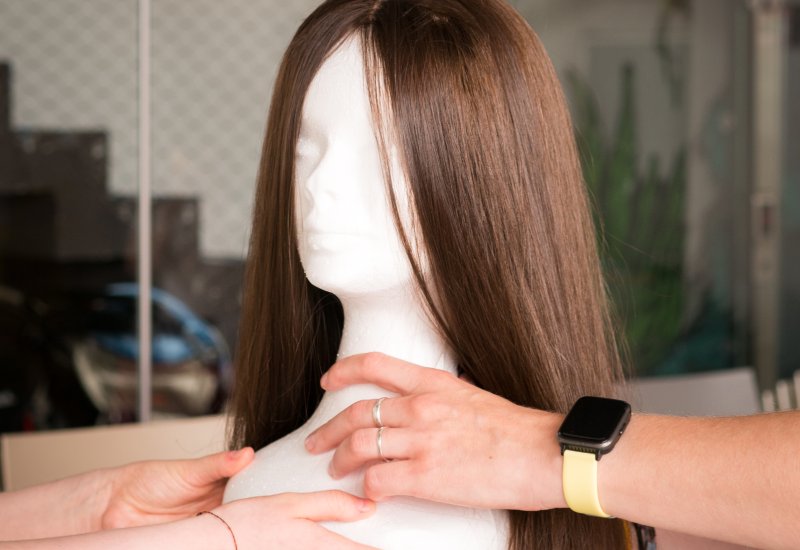
“We were helped in this by our friend Lejla Kusturica, who donated her hair and sent it to America so that an NGO there could make a wig from her hair for a child in Bosnia and Herzegovina. In a way, she pushed us in the direction of forming a similar project in our country”, emphasized Buldić-Bešić.
Finally, in 2017, they officially launched the “My hair, your hair” project, the first step of which was education for wig makers, and then the launch of a wig workshop, where since then they have been making wigs from natural hair for children who have suffered temporary or permanent loss hairs.
Then they faced a general shortage of wigmakers, since the wigmaking trade in Bosnia and Herzegovina is on the decline due to the removal of wigmaking practice and curriculum from high school training for hairdressers and the general ignorance of young people in this type of training and work.
“The hairdressing trade has been on the verge of extinction for a long time, and that was exactly the challenge, i.e. how to find wig makers to make wigs. That’s why we first started the education of wigmakers, to which about 15 people signed up, among whom was a young man, Fuad Halilović, who was treated for cancer in his childhood and who was a volunteer in the Association for many years. It turned out that Fuad is good at this job, that he is very talented and successfully mastered the first education, and somehow it was a logical sequence of events that he would be the person who would stay on this project and make wigs for our children. “Since then, Fuad has been attending additional education and training in the region, and we can safely say that he has become an excellent wig maker,” explained Buldić-Bešić.
As the project expanded, so did the number of requests for wigs, which they had a hard time making with the existing capacities, so they had to employ another wigmaker, who is now successfully working together with Fuad.
“We launched the first public action and hair donation campaign right away in 2017, and it was truly a revolutionary move for the ‘My hair is your hair’ project. This is a project that enjoys great support from BiH society, but also from the region and beyond, because hair arrives from all over the world every day. We now have over 17,000 hair donors in our donor base. We are particularly pleased that 80 percent of our donors are children under the age of 18. The youngest donor is three years old, and the oldest is 83”, said Buldić-Bešić.
So far they’ve made 75 wigs and all the requests they’ve received have been fulfilled, so they’ve filled every need they know of.
“We have to mention that at the moment we only have the option of making wigs for girls, who at the same time have the worst reaction to hair loss due to the length of their hair. Of course, even boys do not go through the process of hair loss painlessly, but the psychological moment and recovery is quite different for these two categories of children”, stressed Buldić-Bešić.
In order to make wigs, you need, first of all, hair, and they say that they do not lack this resource.
“In addition to hair, you need raw materials such as nets, threads for shaking, etc. which we procure within the framework of this project, and these procurements require financial resources. Finally, labor is needed, because without the skillful hands of our wigmakers, all of this previously becomes redundant. The project ‘My hair, your hair’ is financed by donations from good people, socially responsible companies and organizations, and so far we have successfully found interested donors who help us to keep this project alive and functioning. For now, we have solved its financing for the year 2024, and we hope that we will be able to do the same for the following years to come”, said Buldić-Bešić.
As she said, not all children tolerate hair loss in the same way, and therefore not all of them express the need for a wig, but based on the experience of working with children suffering from malignant diseases, who are being treated or have been treated at the wards in Sarajevo and Tuzla, around 80 percent of children express the need for a wig.
“In addition to this category, we also make wigs for children who have lost their hair due to some other autoimmune diseases such as alopecia totalis. Many will say that children are beautiful even without hair, but the problem is much deeper and more psychologically demanding. When we talk about children suffering from malignant diseases, the treatment process is very long and difficult. It is necessary to deal with many problems, such as long-term isolation from the native environment, but also the return to the same with a changed physical scheme”, explained Buldić-Bešić.
He believes that children should not return to their local community physically weakened, without hair and mostly other facial hair, which makes them different and causes problems to cope with the reactions of the environment.
“That’s why wigs mean so much to them that they feel better, that they maintain a positive image of themselves, that they don’t feel different, and that they feel more comfortable in their own skin in their daily interactions in the social community and peer groups,” added Buldić-Bešić.
Written by: Vesna Bešić
This story was written thanks to the generous support of the American people through the “Local Works” program of the United States Agency for International Development in Bosnia and Herzegovina (USAID). The content of the story is solely the responsibility of the author and the “Network for Building Peace”. The views expressed in the story do not necessarily reflect the views of USAID or the United States Government.

